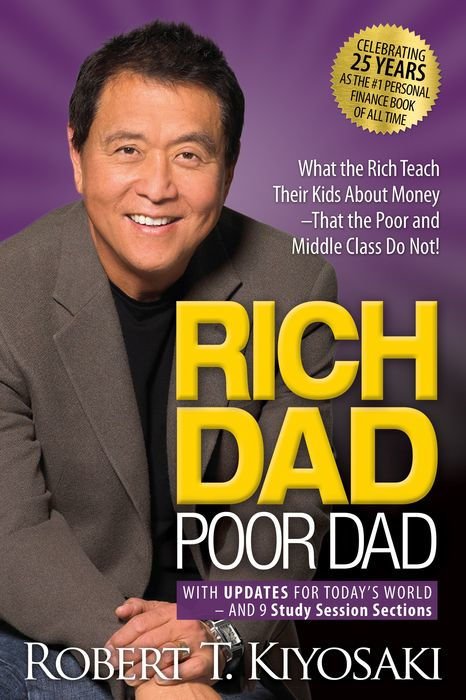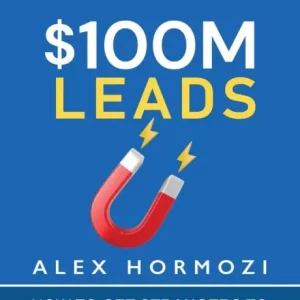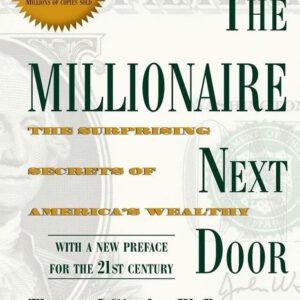Introduction
“Rich Dad Poor Dad” by Robert Kiyosaki is a groundbreaking book in personal finance that presents a unique perspective on wealth, mindset, and financial success. The book explores Kiyosaki’s experiences with two father figures: his biological father, whom he calls “Poor Dad,” and the father of his best friend, whom he refers to as “Rich Dad.” These two men had contrasting approaches to money and financial independence, which profoundly shaped Kiyosaki’s beliefs about wealth.
The book’s central message emphasizes the importance of a “wealth mindset” over a “poverty mindset.” Kiyosaki argues that financial freedom comes from understanding how money works and making it work for you, rather than relying on traditional employment and saving methods. Through stories, lessons, and straightforward advice, “Rich Dad Poor Dad” challenges readers to think differently about money, assets, and liabilities. Since its release, it has become a staple in personal finance literature, inspiring millions to rethink their approach to wealth and financial independence. Kiyosaki’s purpose in writing the book was to teach people how to achieve financial literacy and freedom, making it a timeless resource for anyone seeking control over their financial future.
Author Background and Book Context
Robert Kiyosaki is an entrepreneur, investor, and educator with a diverse background in business, real estate, and finance. Born and raised in Hawaii, Kiyosaki served in the Marine Corps and worked as a salesman before transitioning to real estate investing, which played a key role in his journey to financial success. His personal experiences and financial insights shaped the lessons shared in “Rich Dad Poor Dad.”
Motivated by his observations of how many people struggle with money despite following traditional financial advice, Kiyosaki aimed to offer an alternative approach. The book criticizes conventional education for failing to teach practical financial skills and instead advocates for financial literacy, entrepreneurship, and investing as paths to wealth. Since its release in 1997, “Rich Dad Poor Dad” has challenged readers to reconsider traditional views on money and work, encouraging a shift toward independence through smart investing and financial acumen. Its widespread influence has cemented it as a classic, appealing to audiences around the world who seek to understand and apply the principles of financial freedom.
- The Concept of Assets vs. Liabilities
One of the foundational principles in Rich Dad Poor Dad is Kiyosaki’s distinction between assets and liabilities. He defines assets as anything that puts money into your pocket, such as investments, rental properties, or businesses. Liabilities, on the other hand, take money out of your pocket, such as mortgages, car loans, or credit card debt. Kiyosaki argues that the key to building wealth is acquiring income-generating assets and minimizing liabilities. Many people mistakenly think of their homes or cars as assets, but Kiyosaki emphasizes that unless these items generate income, they are liabilities. This shift in perspective is crucial for understanding how wealth is built over time.
- The Importance of Financial Education
Kiyosaki emphasizes that traditional education systems often fail to teach financial literacy, which he sees as essential for achieving personal success. While schools teach subjects like math, science, and history, they rarely cover topics like budgeting, investing, or understanding how money works. Kiyosaki argues that a lack of financial education leaves individuals ill-equipped to manage their finances and often leads to living paycheck to paycheck. He stresses the need for continuous self-education in areas like investing, tax strategies, and entrepreneurship, which can empower individuals to make informed financial decisions and build lasting wealth.
- Mindset of the Rich vs. Poor
A recurring theme in the book is the contrasting mindset between the “rich” and the “poor.” According to Kiyosaki, the rich focus on opportunities and long-term growth, while the poor often focus on security and immediate needs. For example, the rich might look at a real estate market downturn as an opportunity to buy properties at a discount, while the poor might view it as a crisis. Kiyosaki highlights that the rich are willing to take calculated risks and invest in assets that grow over time, whereas the poor often avoid risk and prioritize stability, such as traditional employment or saving money in low-interest accounts. This shift in mindset, he argues, is crucial for breaking free from the cycle of financial struggle.
- Income Streams and Passive Income
Kiyosaki places great emphasis on the importance of passive income as a pathway to financial freedom. Passive income refers to money earned with minimal ongoing effort, such as rental income, dividends from investments, or royalties from intellectual property. In contrast, active income, such as wages from a job, requires consistent effort and time. Kiyosaki argues that reliance solely on active income often leads to financial vulnerability, as it depends on one’s ability to work. By building multiple streams of passive income, individuals can achieve financial security and have the freedom to pursue their goals and passions.
- Risk-Taking and Entrepreneurship
Finally, Kiyosaki advocates for entrepreneurship and calculated risk-taking over traditional employment as a means to achieve wealth. He criticizes the “safe” path of working for a paycheck and saving for retirement, arguing that it often leads to limited financial growth. Instead, he encourages individuals to start businesses, invest in real estate, or explore other ventures that have the potential for high returns. While acknowledging that entrepreneurship involves risks, he stresses the importance of learning from failures and developing the skills necessary to succeed. In his view, the potential rewards of entrepreneurship far outweigh the risks, offering opportunities for wealth creation and personal fulfillment.
Through these principles, Kiyosaki challenges conventional wisdom about money and provides a framework for achieving financial independence.
Analysis and Critical Review of Rich Dad Poor Dad by Robert Kiyosaki
Robert Kiyosaki’s Rich Dad Poor Dad has become a cornerstone in personal finance literature, lauded for its accessible approach to money management and wealth-building. The book juxtaposes the financial philosophies of two father figures—the author’s “poor dad” (his biological father) and “rich dad” (his friend’s father)—to offer insights into wealth creation. While Kiyosaki presents compelling ideas, his work is not without controversy. This review critically analyzes the book’s strengths, limitations, and the validity of its ideas.
Strengths
Accessible Language and Anecdotes
One of the book’s standout features is its accessibility. Kiyosaki uses straightforward language and relatable anecdotes, making complex financial concepts easy to grasp for readers unfamiliar with finance. The parable-like structure of “rich dad” and “poor dad” simplifies the contrast between traditional employment-focused thinking and entrepreneurial wealth-building. For instance, Kiyosaki’s explanation of assets versus liabilities resonates with readers by demystifying a concept often clouded by jargon. This approach has broadened the book’s reach, making financial literacy less intimidating for a global audience.
Encouragement of Financial Independence
Kiyosaki’s emphasis on financial independence is a central theme, urging readers to rethink reliance on traditional employment. By highlighting the pitfalls of the “rat race”—working for a paycheck without long-term wealth-building strategies—Kiyosaki encourages readers to pursue passive income streams, such as real estate investments or owning businesses. This proactive mindset empowers individuals to take charge of their financial futures. His call to prioritize financial education, often neglected in formal schooling, has inspired readers to seek alternative ways to achieve financial freedom.
Focus on a Growth Mindset
Kiyosaki champions a growth-oriented approach to money, advocating for mindset shifts that challenge conventional beliefs. He argues that wealth begins with a change in thinking: viewing money as a tool rather than a goal. This perspective aligns with broader personal development principles, encouraging readers to embrace lifelong learning, risk-taking, and resilience. Many have found this motivational aspect transformative, leading them to reassess their attitudes toward work, risk, and financial planning.
Limitations and Criticisms
Controversial Financial Advice
Despite its merits, Rich Dad Poor Dad has faced criticism for promoting risky financial strategies. For example, Kiyosaki’s emphasis on leveraging debt for real estate investments can be perilous for average readers lacking expertise or financial cushioning. Critics argue that his advice oversimplifies the complexities of real estate markets, potentially leading to significant losses. While Kiyosaki’s success lends credibility to his methods, his personal experiences may not be replicable for the majority, especially those unprepared for high-stakes financial decisions.
Generalizations and Simplifications
Another critique is the book’s oversimplified dichotomy of the “rich” versus “poor” mentality. While effective as a narrative device, this framework risks painting an unrealistic picture of socioeconomic realities. Kiyosaki’s portrayal of wealth as a result of mindset alone often overlooks systemic factors, such as access to education, healthcare, and economic opportunities. By framing poverty as a mindset issue, the book inadvertently marginalizes the structural barriers many face. This simplification may alienate readers who find Kiyosaki’s advice disconnected from their lived experiences.
Real-Life Applicability
The practical applicability of Kiyosaki’s ideas has been questioned, particularly for readers without starting capital or access to high-paying jobs. His advice assumes a level of financial stability and risk tolerance that may not be feasible for those living paycheck to paycheck. For instance, Kiyosaki’s suggestion to prioritize investing over saving may not resonate with individuals struggling to meet basic needs. Critics argue that the book would benefit from more nuanced advice tailored to diverse financial circumstances.
Counterpoints and Support
Despite its flaws, Rich Dad Poor Dad has had a profound impact on popularizing financial literacy. Advocates argue that the book’s purpose is to inspire rather than provide step-by-step guidance, making its motivational tone its greatest strength. Additionally, some financial experts acknowledge the value of Kiyosaki’s ideas when combined with caution and further education. For instance, while his real estate strategies may be risky, they underscore the importance of exploring income-generating assets, a principle widely endorsed in wealth-building literature.
On the other hand, critiques from professionals like John T. Reed, a financial author, highlight inaccuracies and potential legal pitfalls in Kiyosaki’s advice. Reed argues that Kiyosaki’s anecdotes lack verifiable evidence, raising questions about their credibility. These contrasting views suggest that readers should approach the book as a starting point for financial education rather than a definitive guide.
Conclusion
Rich Dad Poor Dad remains a compelling read for those seeking a paradigm shift in their approach to money. Its strengths lie in its accessible language, motivational tone, and emphasis on financial independence. However, its limitations—controversial advice, oversimplifications, and questionable real-world applicability—necessitate a critical reading. While Kiyosaki’s ideas inspire, readers must supplement them with practical knowledge and a realistic assessment of their circumstances. Ultimately, the book’s value lies in sparking a conversation about financial empowerment, making it a valuable, albeit imperfect, resource for aspiring wealth builders.
Real-World Implications and Relevance
Rich Dad Poor Dad by Robert Kiyosaki has played a pivotal role in the growing emphasis on financial literacy. Its core message about breaking free from the traditional “earn-save-retire” mentality and adopting smarter financial habits has resonated with millions worldwide. The book has contributed to the increasing awareness of financial education, encouraging individuals to explore concepts like passive income, investments, and financial independence—topics often overlooked in formal education systems.
Kiyosaki’s focus on real estate and entrepreneurship remains relevant today, albeit with nuances brought about by the modern economy. The rise of technology, the gig economy, and digital assets like cryptocurrency have created new avenues for wealth creation. While real estate continues to be a reliable investment, the book’s emphasis on adaptability and acquiring assets aligns well with current trends in tech-driven entrepreneurship. However, critics argue that some of Kiyosaki’s advice, such as leveraging debt, might be riskier in today’s uncertain economic climate.
The influence of Rich Dad Poor Dad extends beyond its pages, inspiring a generation of financial educators, authors, and content creators. Books, blogs, podcasts, and YouTube channels dedicated to personal finance often reference Kiyosaki’s principles. Notable authors like Dave Ramsey and Tony Robbins have built on similar ideas, though with varying philosophies on risk and debt management. Kiyosaki’s work has undeniably fueled the rise of accessible finance-related resources aimed at empowering individuals to take control of their financial futures.
Personal Reflection and Lessons Learned
Reading Rich Dad Poor Dad was a transformative experience. It challenged my traditional understanding of wealth and encouraged me to think critically about financial freedom. The distinction between “assets” and “liabilities,” a central theme in the book, shifted my perspective on spending. For instance, I now evaluate purchases by asking whether they will generate income or drain resources—a principle that has guided my financial decisions since.
One of the book’s most impactful lessons was the idea of making money work for you, rather than working for money. This mindset made me more open to exploring passive income streams like investments and side hustles. However, implementing these principles is not without challenges. For instance, Kiyosaki’s emphasis on leveraging debt for investments initially seemed daunting. Yet, by understanding the concept of “good debt” versus “bad debt,” I began to see how strategic borrowing could be a tool for growth.
The book also changed my perspective on risk. While I once viewed risk as something to avoid, Kiyosaki reframes it as an opportunity for growth, provided it’s calculated and informed. This has encouraged me to embrace financial planning and continuous learning as ways to mitigate uncertainty.
Overall, the book instilled in me a stronger sense of control over my financial future. It’s not a step-by-step manual but rather a motivational guide that emphasizes mindset shifts, which I found empowering.
Conclusion
Rich Dad Poor Dad is a cornerstone in the personal finance genre, offering valuable insights into wealth creation and financial independence. Its principles, though occasionally polarizing, have inspired countless individuals to rethink their relationship with money and take proactive steps toward building assets. The book’s emphasis on financial education, entrepreneurship, and breaking free from the “rat race” remains relevant, even in today’s rapidly evolving economy.
I would recommend Rich Dad Poor Dad to anyone new to personal finance, particularly young professionals, aspiring entrepreneurs, and individuals looking to break traditional financial molds. While it may not provide a detailed roadmap, its motivational tone and core principles make it an excellent starting point for developing a wealth-oriented mindset.
Final Thoughts and Recommendation
The enduring popularity of Rich Dad Poor Dad lies in its ability to inspire readers to think differently about money and success. While some of Kiyosaki’s principles may require adaptation to align with one’s values or risk tolerance, the book remains a powerful catalyst for financial introspection.
I recommend approaching the book as a source of inspiration rather than a strict guide. Its lessons on mindset, financial literacy, and wealth-building are timeless, making it a worthwhile read for anyone seeking to transform their financial future.



